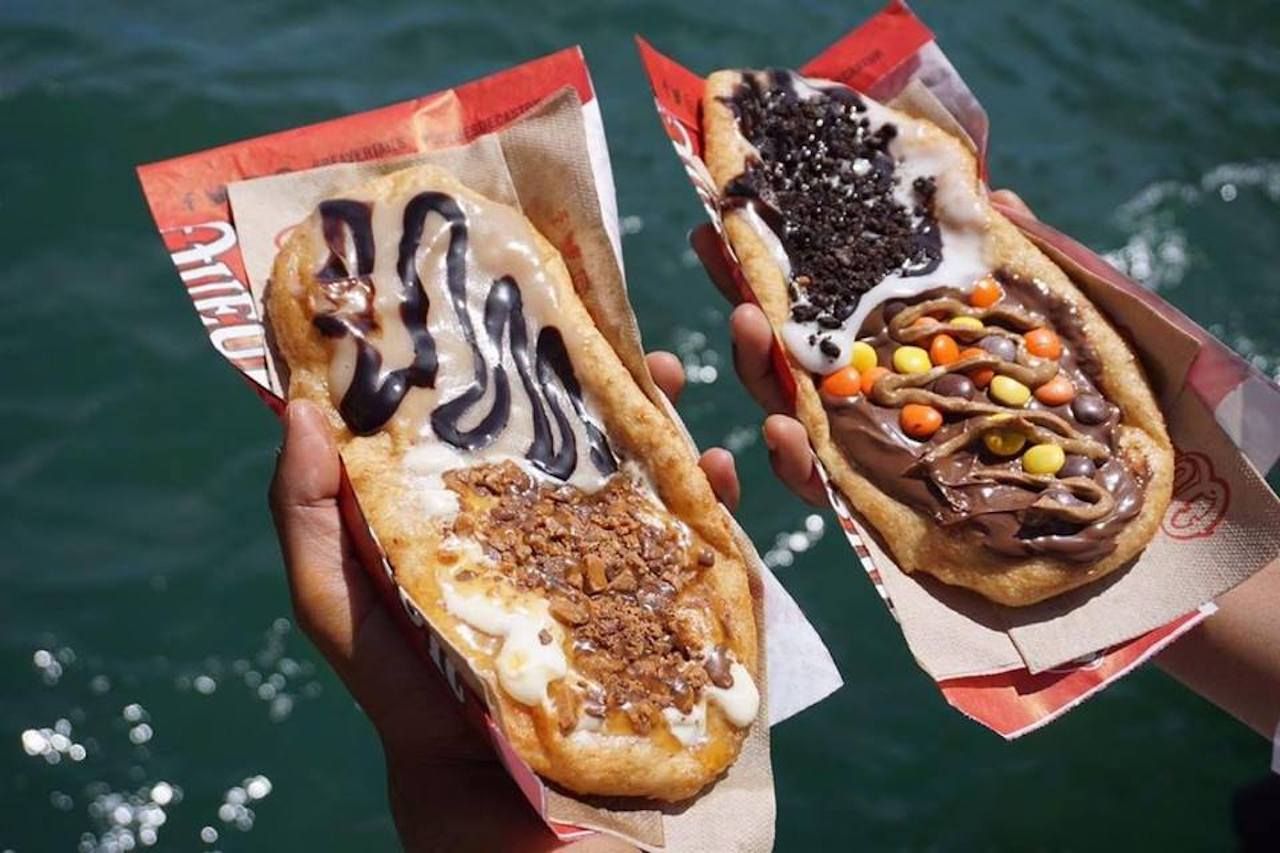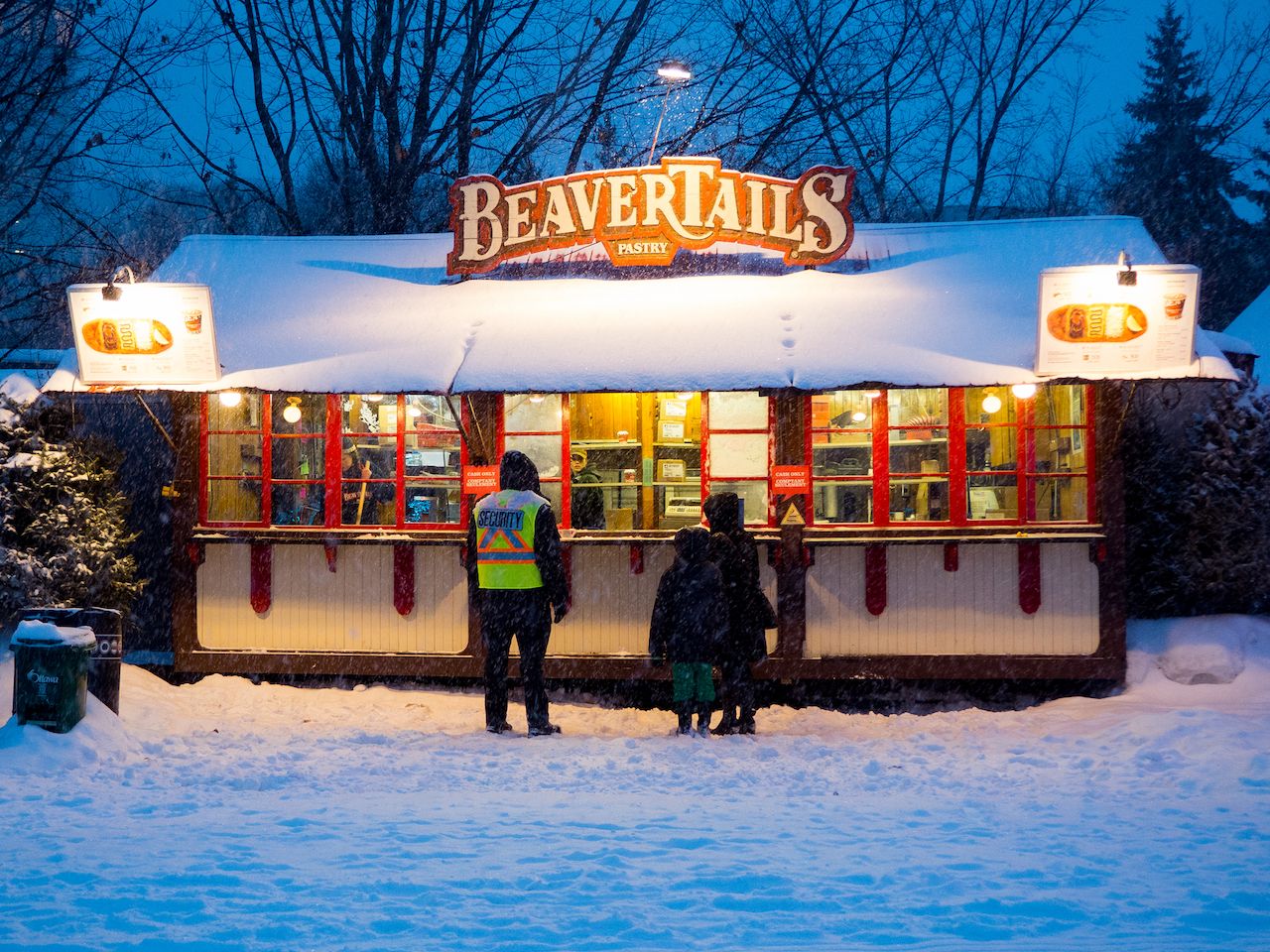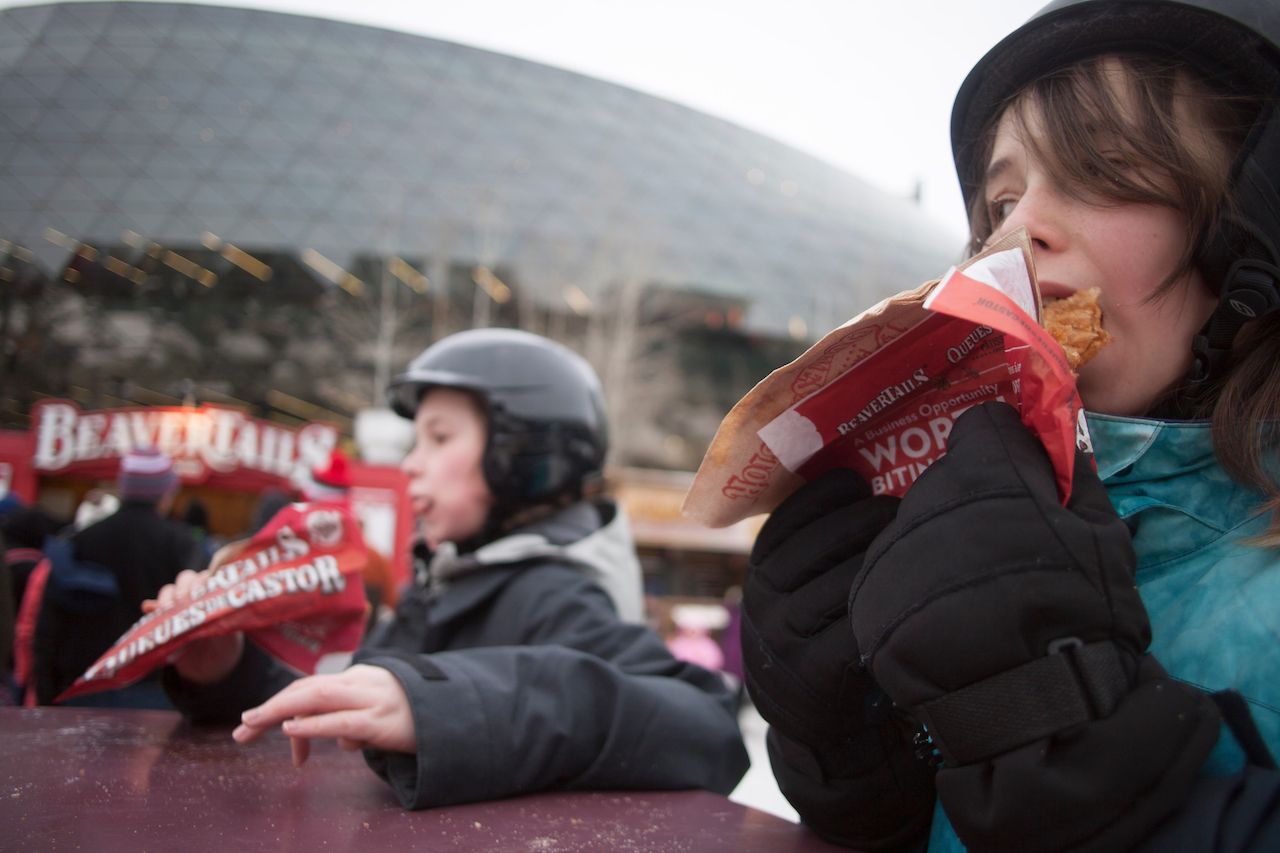The sweet aroma as you approach the little red-roofed chalet signals fresh pastries straight ahead. But these aren’t just any baked goods. They’re a giant, deep-fried delicacy called BeaverTails, and like the equally popular Nanaimo bar, they’re as symbolically Canadian as the buck-toothed rodent they’re named after.
- What is a BeaverTail?
- What are BeaverTails made of?
- Who invented Who invented BeaverTails?
- Are BeaverTails only in Canada?
- Can you get BeaverTails in the US?
What is a BeaverTail?
They’re not real beaver tails, of course (although a smaller number of people eat those as well). This BeaverTail is a ball of whole-wheat dough that’s hand-stretched into a long, flat oval — the same shape as its namesake. Like many other types of donuts, it’s then deep-fried in canola oil and served piping hot in a paper sleeve.




